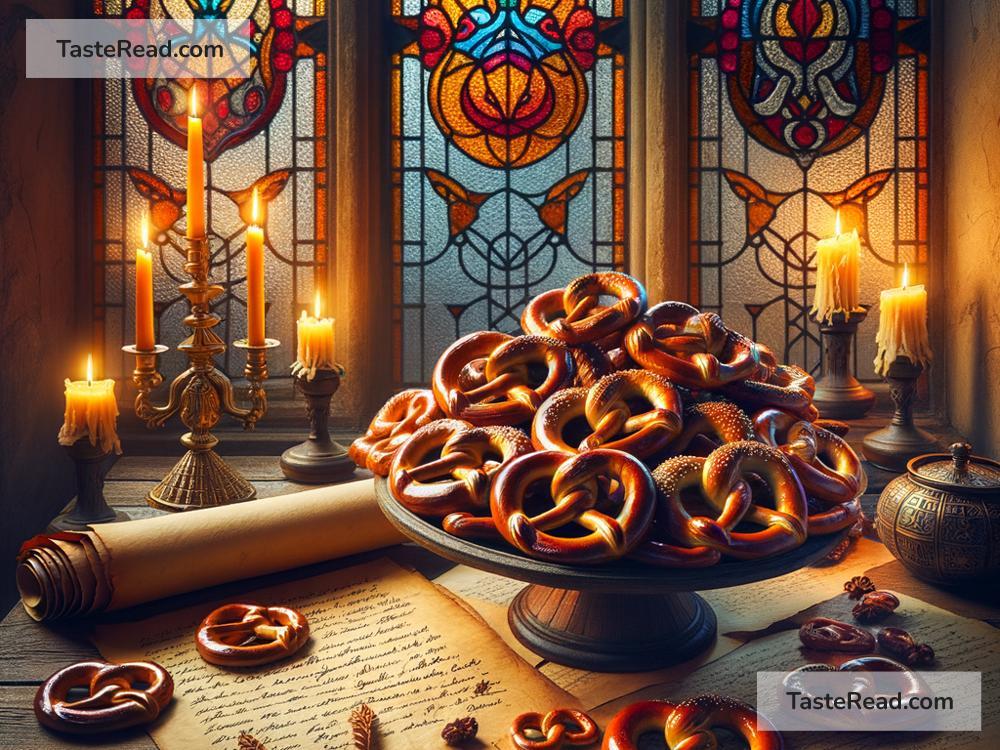The History of German Pretzels and Their Religious Symbolism
Pretzels are one of Germany’s most iconic snacks, enjoyed by people all over the world. But did you know that pretzels have a fascinating history that dates back centuries, with strong religious symbolism tied to their unique shape? Let’s take a journey through time to learn about the origins of pretzels, their connection to faith, and how they became a beloved part of German culture.
The Origin of the Pretzel: A Monkish Creation?
The pretzel’s exact origins are shrouded in mystery, but the most widely accepted story begins in the early Middle Ages, around 600 AD. According to legend, a group of Christian monks in Southern Europe or possibly Germany created the pretzel as a reward for children who memorized their prayers. They shaped the dough into twisted loops to represent arms crossed in prayer—a common posture during religious devotion at the time.
The pretzel design consists of three sections, which originally symbolized the Holy Trinity in Christianity: the Father, the Son, and the Holy Spirit. Because of this, the pretzel became more than a simple snack—it was a religious symbol and an encouragement for people to focus on their faith.
Lent, Fasting, and the Pretzel’s Role
During Lent, the 40 days before Easter, Christians were traditionally required to fast and abstain from certain foods like dairy, eggs, and meat. Pretzels, made of only flour, water, and salt, became an ideal food for Lent. They were simple, nourishing, and adhered to the strict fasting rules.
As a result, pretzels gained popularity in monasteries, where monks baked them in large quantities. Over time, pretzels became a common food item for people across Europe. Their association with religion continued, and their shape reminded many of prayer and spiritual devotion.
Pretzels and Good Luck
Pretzels were also believed to bring good luck. In medieval Europe, people would hang pretzels on their walls to ward off evil spirits. They were thought to symbolize prosperity, fulfillment, and protection. This belief spread, and pretzels started appearing at celebrations such as weddings and festivals. For example, in Germany, it was customary for newlyweds to share a pretzel during their wedding ceremony as a sign of unity and good fortune.
Another fun tradition featured pretzels being hidden during Easter. Much like today’s Easter egg hunts, children would search for hidden pretzels on Easter morning. This activity combined joy with religious symbolism, celebrating both the resurrection of Christ and the tradition of fasting during Lent.
The Pretzel’s Journey Through Germany
By the 12th century, pretzels were firmly established in German culture. Bakers started perfecting the soft, chewy texture and added larger quantities of salt or even butter for a more indulgent taste. Pretzels became central to German baking, and bakers developed regional varieties—some were thick and fluffy, while others were thin and crunchy. They began appearing in markets and homes as a favorite snack.
Over time, pretzels evolved from their purely religious roots and became an everyday food. They were especially popular at beer gardens, where soft pretzels paired perfectly with German beer. Today, they remain a staple of German festivals, such as Oktoberfest, where massive soft pretzels are enjoyed alongside bratwurst and steins of beer.
The Pretzel’s Symbolism Through the Ages
While pretzels became a snack for everyone, their religious symbolism was not forgotten. The twisted loops continued to remind people of prayer and faith. Even the word “pretzel” carries religious significance—it comes from the Latin word “bracellae,” meaning “little arms,” referencing the prayerful posture.
Pretzels have also been tied to peace and unity. In medieval times, they were used as an emblem of reconciliation. If two parties were in a dispute, it was common for them to break a pretzel together to symbolize their agreement and restored harmony.
Pretzels Today: Delicious and Meaningful
Today, pretzels are a global phenomenon. Soft pretzels, hard pretzels, pretzel buns, and even pretzel-flavored snacks have captured the hearts (and taste buds) of people everywhere. Germany still prides itself as the home of the pretzel, and bakers continue to perfect the craft, using traditional techniques passed down through generations.
Though pretzels are now enjoyed primarily for their taste, their religious roots remind us of the rich history behind this humble snack. From monks shaping dough to resemble prayerful arms to families sharing pretzels during Lent and Easter, the pretzel has carried deep meaning through the centuries.
The next time you enjoy a pretzel, take a moment to think about its remarkable journey. It’s more than just a salty treat—it’s a symbol of faith, good luck, and unity that has stood the test of time. So whether you’re visiting Germany or simply snacking at home, you’re taking part in a tradition that is steeped in history and meaning. And that’s something worth celebrating!


